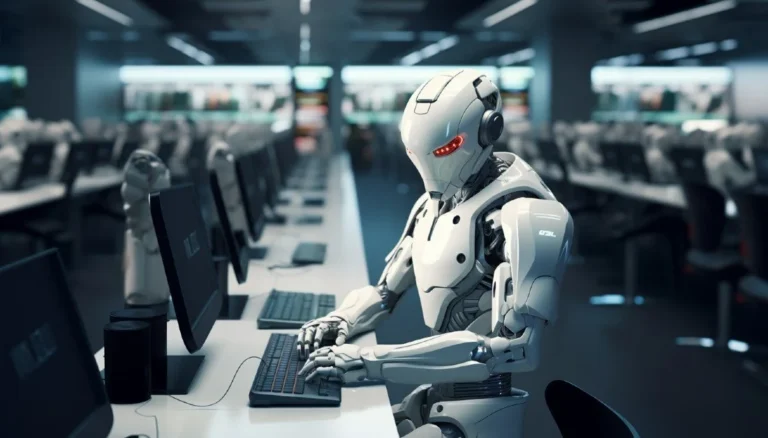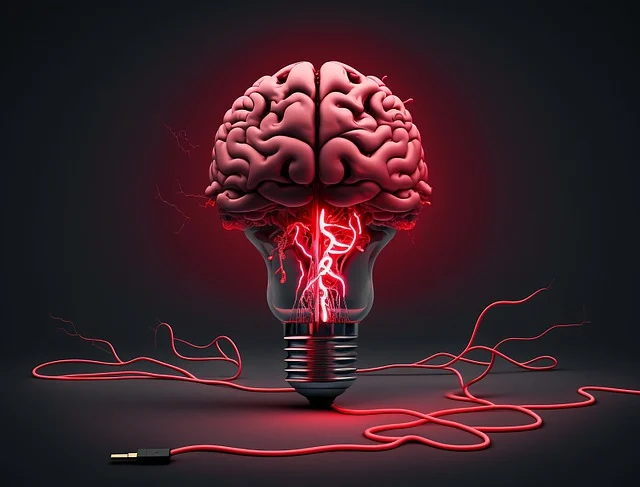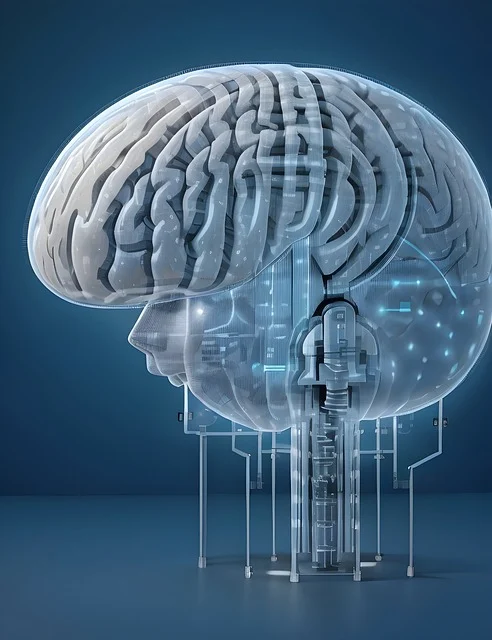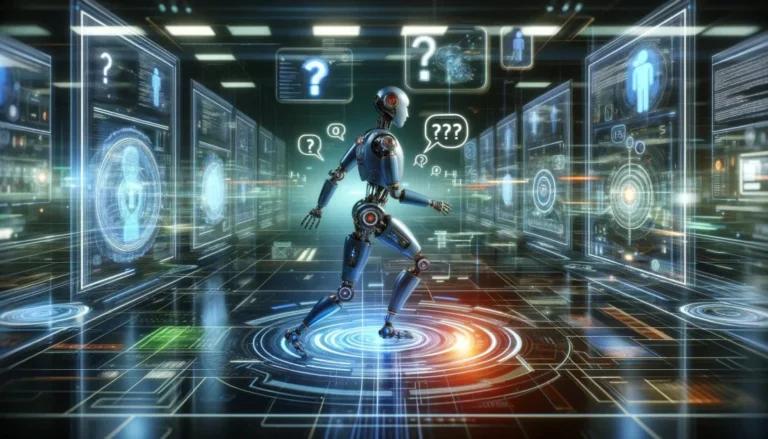Artificial intelligence is transforming cybersecurity by strengthening defense and attack. It specializes in detecting threats, adapting defenses, and providing strong data backups.
However, challenges include the increase in artificial intelligence-based attacks and privacy issues.
Responsible use of AI is crucial. The future includes human-AI collaboration to combat emerging trends and threats in 2024.
The Importance of Staying Up to Date on Trends
Staying up to date on AI trends is crucial because it keeps you informed about the latest developments and keeps you at the forefront of technological innovations.
This knowledge allows you to explore new opportunities, adapt to emerging challenges, and actively contribute to the evolving field of artificial intelligence.
About Us 80% of managers use artificial intelligence technology in their strategies and business decisions. At least one in 10 companies is expected to invest in AI-driven digital content creation.
Being well-informed also improves your ability to engage in meaningful discussions, contribute to projects, and stay current in a rapidly changing environment.
Ultimately, staying current empowers enthusiasts to harness the full potential of AI and make confident decisions in their professional and personal endeavors.
AI-Powered Threat Detection and Response
Artificial intelligence is leading the way in making the digital world safer. Here’s how:
- Advanced algorithms at work: In 2024, artificial intelligence will use the most advanced algorithms by delving deep into the digital environment and constantly scanning for potential threats.
- Real-time response: AI instantly detects a threat and responds in the blink of an eye. Real-time response minimizes the need for hackers to exploit vulnerabilities.
- Behavioral analysis for vulnerability: AI not only recognizes known threats, it goes further. By integrating behavioral analytics, it learns what “normal” looks like for each user. By detecting deviations from standard behavior, AI can signal a potential security issue before it escalates into a full-blown incident.
- Anomaly detection for rapid action: Unusual patterns trigger AI alarm bells. Anomaly detection is like a vigilant guard on duty 24/7. Artificial intelligence detects irregularities and takes action quickly to detect and neutralize potential security threats.
- Minimizing windows of vulnerability: Artificial intelligence leaves no room for cyber threats to breathe. Artificial intelligence reduces windows of vulnerability when a system is exposed to a potential attack, ensuring that your digital fortress always remains safe from cyber adversaries.
- Simplifying the target response: There is no one-size-fits-all solution. AI adapts its responses based on the specific threat it encounters. This targeted approach means less collateral damage and more sensitive handling of security incidents.
- Artificial intelligence protective effect: As artificial intelligence becomes a digital protector, cyber security becomes proactive rather than reactive. It’s not just about combating threats; It’s also about predicting, preventing and staying ahead in the ongoing war against cyber adversaries.
Zero Trust Architecture
In 2024, zero trust architecture powered by artificial intelligence is expected to develop along with developments that increase its effectiveness in cyber security.
This approach adopts the principles of “trust no one, verify everything” to leverage AI to further improve continuous assessment processes.
Adapting access controls to evolving risks will become more complex and will require ongoing and vigilant auditing of user credentials and activities.
Thanks to AI-powered anomaly detection, zero trust will detect unusual patterns and respond more precisely, strengthening the security framework.
The Securities and Exchange Commission (SEC) is working to meet long-term zero trust requirements set by the Office of Management and Budget.
Federal agencies must meet zero trust security goals by the end of fiscal year 2024. To do this, agencies must appoint a zero trust strategy leader and complete 19 tasks.
Considering the various factors in which AI evaluates user behavior and device posture, this security approach will be essential in providing measures that are specific and responsive to certain situations.
Artificial Intelligence in Data Backup and Recovery
Integrating AI into data backups in 2024 will become standard practice and reshape how organizations approach security.
The example of Kyoto University, where a poorly designed backup system led to the loss of 77 terabytes of research information , highlights its importance.
The failure occurred because the most recent backup job immediately overwrote the previous one, leaving no backup available when data restoration was required.
The introduction of generative AI tools marks a shift in disaster recovery processes. This gives efficiency and reliability to restoration procedures beyond traditional methods.
This can help organizations anticipate a significant improvement in data durability, providing a more robust defense against potential loss or corruption.
The transformative effect does not end there; The role of AI extends to streamlining the recovery workflow.
This rapid and effective recovery is critical to maintaining operational continuity and mitigating the potential consequences of a cyberattack.
The Rise of Adversarial AI
Challenges may arise in the coming year as organizations increase their cybersecurity with artificial intelligence. Adversarial AI designed to deceive other AI systems is becoming a threat vector.
To counter competing AI, organizations need to strategically invest in resilient systems. Solid pattern training techniques are important to increase endurance.
Continuous monitoring mechanisms play an important role in detecting and mitigating attacks.
Addressing adversarial AI requires collaboration within the cybersecurity community.
Sharing insights, tactics and defensive strategies is vital to staying ahead of evolving threats. A united front encourages cohesion, resulting in a stronger defense.
Human Augmentation for Security Operations
Collaboration between artificial intelligence and human expertise will come to the fore in 2024 and transform cybersecurity operations.
Artificial intelligence-supported tools are poised to empower cybersecurity professionals by strengthening their decision-making and intervention capabilities.
This integration aims to strike a balance by allowing human analysts to focus on high-level analysis and strategic planning while AI performs routine tasks efficiently.
This synergy creates a strong and adaptable cybersecurity workforce that ensures effectiveness against cyber threats.
Ensuring Secure Data Practices
In 2022, almost half of companies fell victim to cyber-attacks due to third-party involvement.
There were also more than 112 million attacks on IoT systems in the same year. Here’s how privacy-preserving AI techniques are shaping cybersecurity in 2024:
- Advanced technology: Organizations that embrace privacy concerns use advanced techniques such as: federated learning and homomorphic encryption.
- Insights without compromise: These technologies enable organizations to extract valuable insights from data without compromising personal privacy.
- Regulatory compliance: Privacy-preserving AI seamlessly adapts to evolving regulatory requirements, providing a robust framework for compliance.
- Developing trust: This approach builds trust among users and stakeholders by emphasizing the responsible handling of sensitive information.
- Balancing act: Striking a balance between effective cybersecurity measures and respecting individual privacy rights, privacy-preserving AI is becoming the cornerstone in the ethical and secure management of data.
Regulatory Compliance and Disclosure
Regulatory bodies are focusing on transparency and accountability. The need for explainability in artificial intelligence algorithms becomes important in meeting compliance requirements.
Organizations should demonstrate how AI-driven decisions are made by making explainable AI models important.
These models simplify regulatory compliance audits by clearly understanding the decision-making process.
Artificial Intelligence Supported Cyber Security Workforce Training
By 2030, an estimated 30 percent of tasks will be automated using AI technology. Prepare for a new era of cybersecurity workforce training as artificial intelligence comes onto the scene. Here’s what to expect:
- Realistic training scenarios: Simulation platforms that leverage artificial intelligence create realistic training scenarios that reflect the complexity of dynamic threats.
- Adaptation to evolving threats: Artificial intelligence-supported training modules adapt to threats. This ensures that cybersecurity professionals are constantly exposed to the latest challenges and fine-tune their skills.
- Enhanced skill development: Infusion of AI enhances skill development and provides a hands-on, immersive experience. Professionals can hone their skills in a controlled environment before facing real-world cyber threats.
- Accelerated learning curve: AI-powered training accelerates the learning process of new entrants to the cybersecurity field. The adaptable nature of these modules allows for personalized learning journeys, enabling professionals to quickly grasp the ins and outs of the field.
- Preparing for emerging challenges: By aligning with artificial intelligence, cybersecurity training becomes forward-looking, preparing professionals to meet emerging challenges and stay ahead.
Prepare for Cybersecurity AI Trends in 2024
Cybersecurity is facing some significant changes. Its future depends on how well AI adapts, continues to learn, and collaborates with human experts.
Staying vigilant will shape a safer digital future in the face of emerging cyber threats and trends in 2024.










